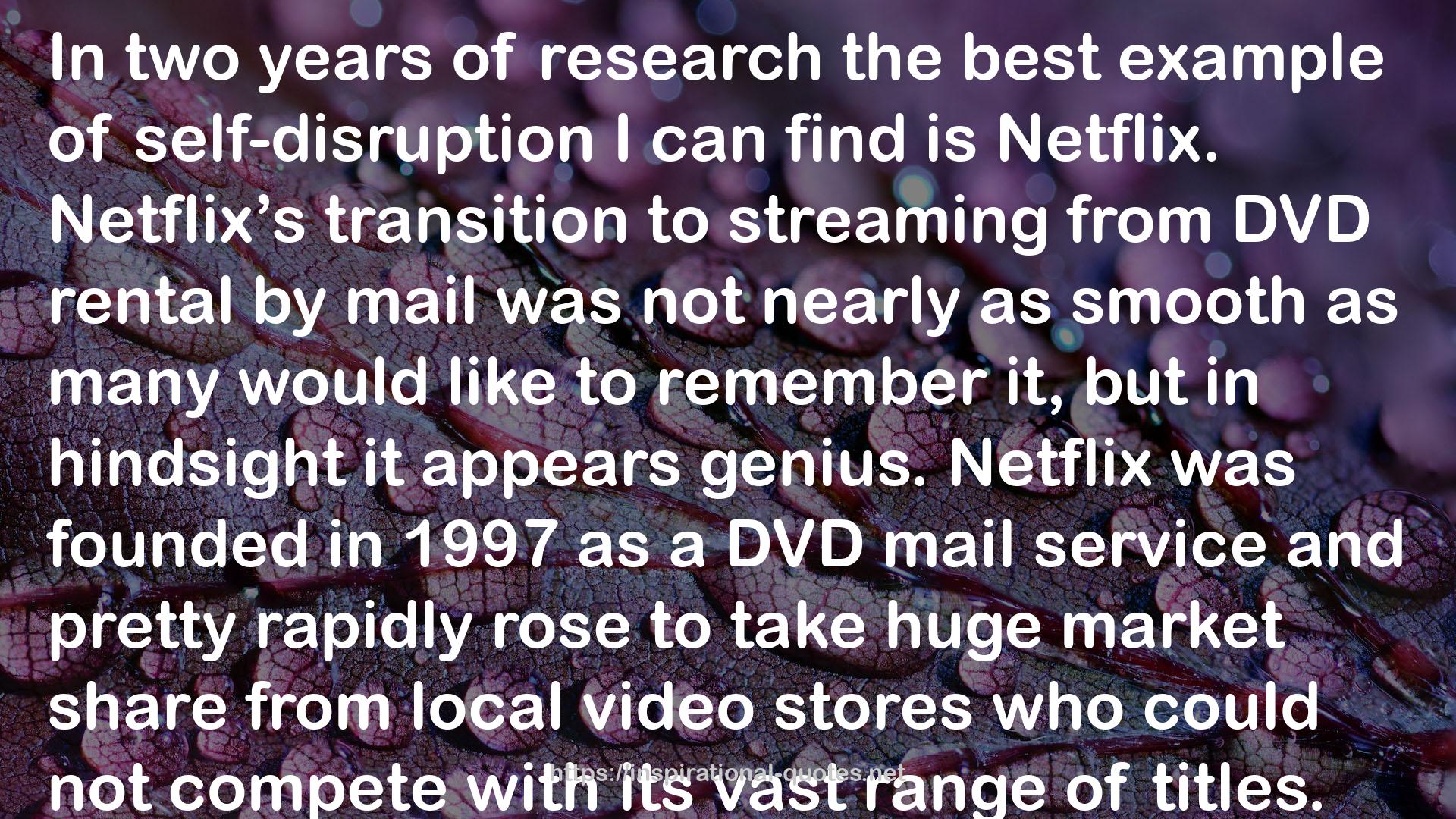" In two years of research the best example of self-disruption I can find is Netflix. Netflix’s transition to streaming from DVD rental by mail was not nearly as smooth as many would like to remember it, but in hindsight it appears genius. Netflix was founded in 1997 as a DVD mail service and pretty rapidly rose to take huge market share from local video stores who could not compete with its vast range of titles. People soon appreciated the appeal of no late fees, the ability to have several movies out at the same time, as well as its unlimited consumption tariff. Always keen to keep abreast of the latest technology, in 2007 Netflix spent about $40 million to build data centres and to cover the cost of licensing for the initial streaming titles (Rodriguez, 2017). When internet speeds allowed, it introduced streaming as an additional service for its existing subscribers. Monthly fees remained the same, but those with more expensive tariffs were given access to more hours of streamed content. While it added something for free, it also helped give people a reason to upgrade to more expensive plans. Growth was impressive, the video libraries of streamed content rose, the share price rose impressively from $3 in 2007 to over $42 in 2011, and life was good. In September 2011 Netflix made a very bold move. It created two tariffs, and moved all its US subscribers onto two separate plans: the original DVD-by-mail service was to be called Qwikster; the other was a streaming service for a lower monthly fee. The market was shocked, and by December the stock price was below $10 and the company was in pieces. The company rapidly lost higher revenue DVD subscribers and within nine months profits were down by 50 per cent (Steel, 2015). And yet slowly things changed. First, the lower prices suddenly appealed to a much wider market, bringing in far more paying customers, allowing Netflix to buy more content and to slowly raise prices. Then Netflix started making its own original content, clearing out global streaming rights, and then at a flick of a switch it was able to expand globally. If Netflix had not disrupted itself it would be a very different company. It would rely on a massive physical distortion system, with very high costs. It would probably have lost out massively to YouTube and would have withered away as a mail-order DVD supplier. Instead, Netflix’s share price is now nearly $200, five times more than it was when it bravely self-disrupted, it operates in 190 countries, makes nearly $9 billion in revenue from over 110 million customers (Feldman, 2017). Today DVDs represent only 4 per cent of Netflix’s users. It seems that in 2011, when Wall Street was demanding the resignation of Reed Hastings for reinventing the business, they were wrong. From this you can see the pressure this approach places on leaderships, the confidence you need to have, the degree to which this antagonizes the market and everyone around you. This move takes balls. The confidence, conviction, and aggression, to change before you have to create your own future, is remarkable. "
― , Digital Darwinism: Survival of the Fittest in the Age of Business Disruption
